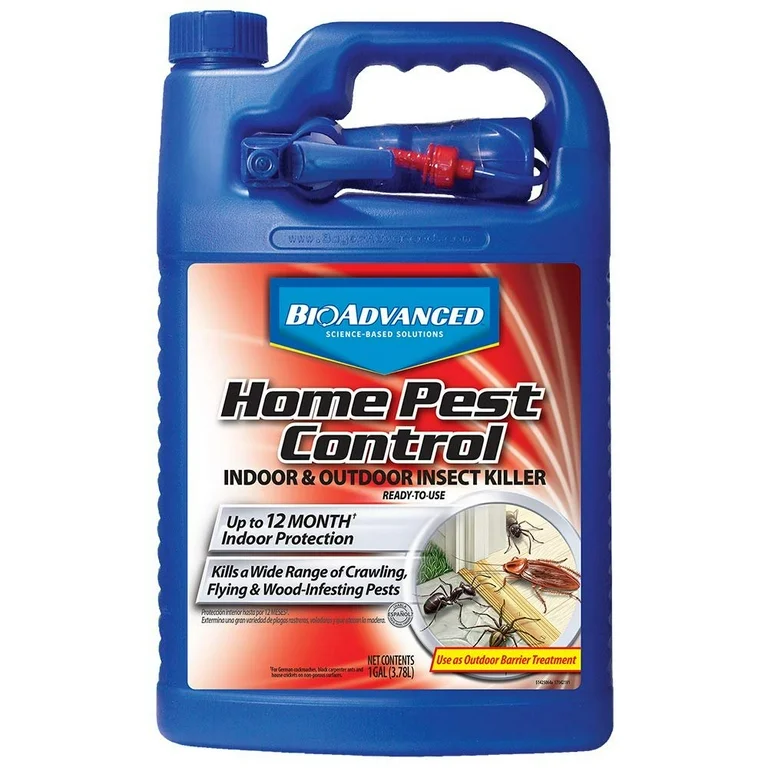Trusted A1 Exterminator Charlotte NC - Comprehensive Pest Solutions
Trusted A1 Exterminator Charlotte NC - Comprehensive Pest Solutions
Blog Article
Bed Insect Treatment Failure: Contrasting Chemical Vs. Non-Chemical Solutions
In the world of pest control, especially when managing the persistent problem of bed pests, the selection in between chemical and non-chemical treatment solutions can be a crucial one. Both methods provide distinct benefits and drawbacks, influencing aspects such as effectiveness, safety and security considerations, and overall cost. By taking a look at the nuanced information of each approach, a more clear understanding of which course to go after in dealing with a bed bug invasion can be achieved.
Performance of Chemical Therapies
Chemical treatments for bed bug problems have been extensively identified for their potent and rapid efficacy in eradicating these bugs. When considering the efficiency of chemical treatments, it is essential to recognize that they can provide a comprehensive and quick option to a bed insect issue. Specialist pest control experts commonly rely on insecticides to target bed insects at various phases of their life process, consisting of adults, eggs, and fairies. These chemicals generally work by disrupting the bed insects' nerves, resulting in paralysis and eventual fatality.
In addition, chemical therapies have the benefit of offering recurring results, meaning that they can remain to eliminate bed bugs also after the first application. This recurring action is particularly valuable in combating any potential re-infestations. Furthermore, the rapid activity of chemical therapies can bring alleviation to individuals encountering extreme bed bug problems, permitting them to reclaim control of their living spaces quickly.
Safety Interest In Chemical Solutions
One vital aspect that requires mindful consideration when using chemical options for bed pest treatment is guaranteeing the security of passengers and the environment. Direct exposure to particular chemicals utilized in bed pest therapies can lead to breathing issues, skin inflammation, or other adverse reactions, specifically in people with pre-existing conditions or level of sensitivities.
Additionally, the environmental influence of chemical services is another considerable factor to consider. Some pesticides utilized in bed pest therapies may be damaging to helpful pests, wildlife, and environments if they leach into the dirt or water supply. It is necessary to make use of chemical treatments deliberately, complying with safety standards, and considering much less toxic alternatives to mitigate these threats and guarantee the risk-free and effective monitoring of bed bug problems.
Benefits of Non-Chemical Methods
Considering the possible safety issues and environmental impact linked with chemical solutions for bed insect treatment, exploring non-chemical methods offers an encouraging alternative with a number of unique advantages. Non-chemical techniques supply a much safer alternative for houses, specifically those with youngsters, pet dogs, or people conscious severe chemicals. These strategies get rid of the threats of exposure to toxic substances, minimizing the capacity for adverse health and wellness effects. Furthermore, non-chemical treatments are eco friendly, as they do not contribute to air or water air pollution, making them a lasting option for bug control.
Furthermore, non-chemical remedies can be reliable in targeting bed bugs, including hard-to-reach areas where chemical therapies might not penetrate - A1 bed bug exterminator charlotte. Approaches such as heat therapy, vacuuming, vapor cleaning, and bed mattress encasements provide comprehensive obliteration without the usage of unsafe chemicals.
Limitations of Non-Chemical Treatments

Additionally, non-chemical treatments typically require multiple applications to attain effective obliteration. This can be lengthy and might not always assure full removal of all bed pests and their eggs, specifically in hard-to-reach or covert areas.
Moreover, the success of non-chemical therapies greatly depends on correct implementation and thoroughness, which can be challenging for individuals pest control jobs without expert proficiency. Poor application of non-chemical techniques might cause incomplete elimination, causing persistent infestations and the requirement for extra treatments.
For article source that reason, while non-chemical therapies have their advantages, it is crucial to recognize these limitations and consider them when establishing the most efficient strategy for handling bed bug infestations.
Expense Comparison: Chemical Vs. Non-Chemical Options
Provided the limitations linked with non-chemical therapies, an important element to evaluate in the context of bed bug management is the expense comparison in between chemical and non-chemical alternatives. Chemical therapies typically involve the application of insecticides by professionals, which can vary from $250 to $900 per space, relying on the severity of the invasion and the dimension of the location to be dealt with. In comparison, non-chemical therapies like heat therapy or heavy steam can be extra costly, with prices varying from $1,000 to $6,000 for an entire home. While the initial expense of chemical treatments may seem lower, multiple treatments might be called for to fully eliminate the problem, potentially boosting the total expense. On the various other hand, non-chemical alternatives may provide a more lasting and eco-friendly solution, although they can be cost-prohibitive for some people. Eventually, when taking into consideration the expense of bed insect therapy choices, it is very important to evaluate the in advance costs versus the effectiveness and lasting sustainability of the selected approach.
Final Thought

Taking into consideration the prospective security worries and environmental effect linked with chemical solutions for bed pest therapy, checking out non-chemical strategies provides a promising choice with several unique advantages.Given the restrictions associated with non-chemical treatments, an essential facet to evaluate in the context of bed bug administration is the expense comparison in between chemical and non-chemical choices. In contrast, non-chemical therapies like heat treatment or vapor can be a lot more costly, with prices varying from $1,000 to $6,000 for an entire home. While the first expense of chemical therapies might appear reduced, multiple treatments may be called for to completely eliminate the infestation, possibly enhancing the overall expense.In verdict, when comparing chemical and non-chemical bed bug therapy options, it is essential to consider effectiveness, security, benefits, constraints, and expense.
Report this page